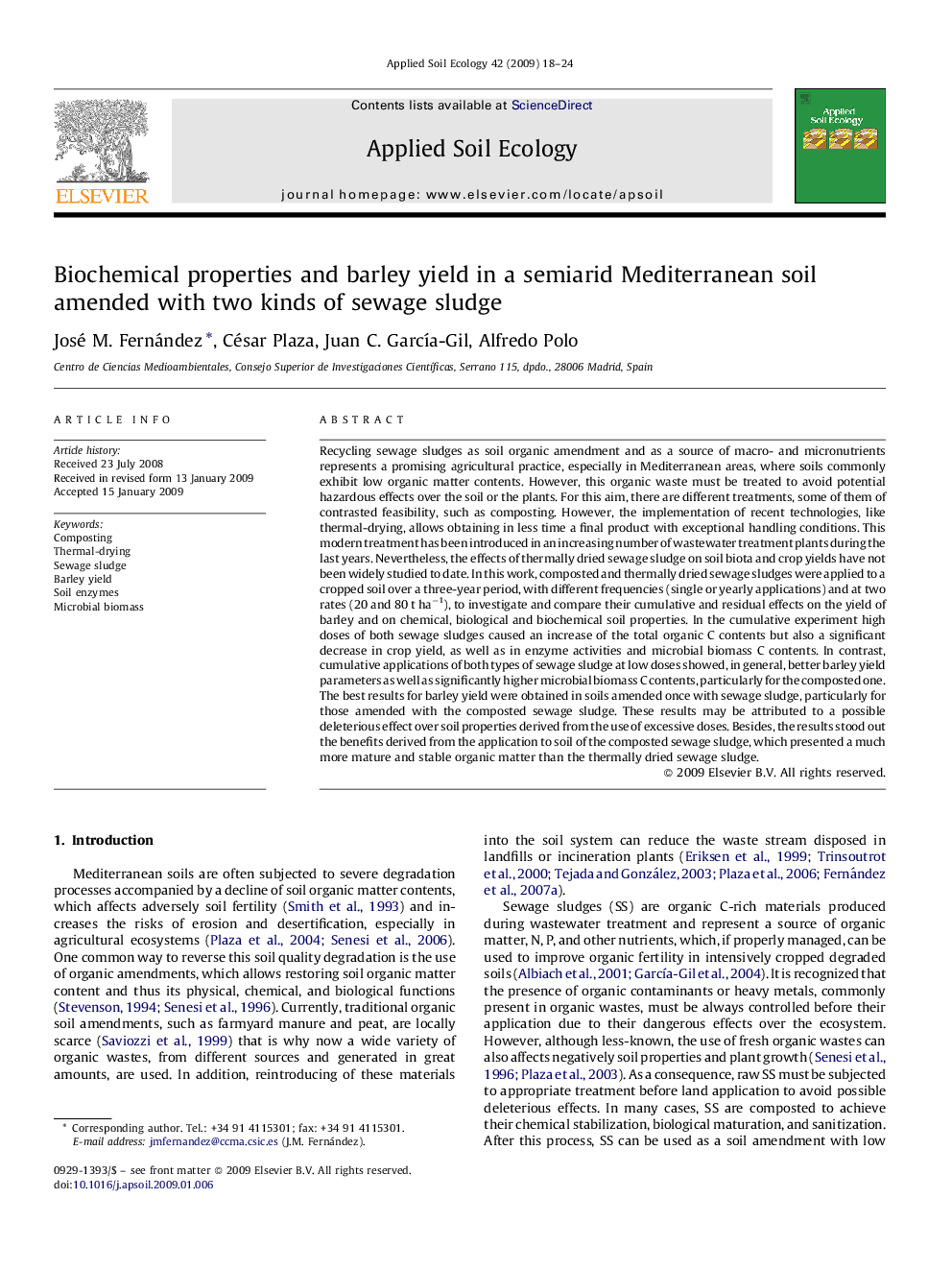| کد مقاله | کد نشریه | سال انتشار | مقاله انگلیسی | نسخه تمام متن |
|---|---|---|---|---|
| 4383048 | 1304245 | 2009 | 7 صفحه PDF | دانلود رایگان |
عنوان انگلیسی مقاله ISI
Biochemical properties and barley yield in a semiarid Mediterranean soil amended with two kinds of sewage sludge
دانلود مقاله + سفارش ترجمه
دانلود مقاله ISI انگلیسی
رایگان برای ایرانیان
کلمات کلیدی
موضوعات مرتبط
علوم زیستی و بیوفناوری
علوم کشاورزی و بیولوژیک
بوم شناسی، تکامل، رفتار و سامانه شناسی
پیش نمایش صفحه اول مقاله

چکیده انگلیسی
Recycling sewage sludges as soil organic amendment and as a source of macro- and micronutrients represents a promising agricultural practice, especially in Mediterranean areas, where soils commonly exhibit low organic matter contents. However, this organic waste must be treated to avoid potential hazardous effects over the soil or the plants. For this aim, there are different treatments, some of them of contrasted feasibility, such as composting. However, the implementation of recent technologies, like thermal-drying, allows obtaining in less time a final product with exceptional handling conditions. This modern treatment has been introduced in an increasing number of wastewater treatment plants during the last years. Nevertheless, the effects of thermally dried sewage sludge on soil biota and crop yields have not been widely studied to date. In this work, composted and thermally dried sewage sludges were applied to a cropped soil over a three-year period, with different frequencies (single or yearly applications) and at two rates (20 and 80 t haâ1), to investigate and compare their cumulative and residual effects on the yield of barley and on chemical, biological and biochemical soil properties. In the cumulative experiment high doses of both sewage sludges caused an increase of the total organic C contents but also a significant decrease in crop yield, as well as in enzyme activities and microbial biomass C contents. In contrast, cumulative applications of both types of sewage sludge at low doses showed, in general, better barley yield parameters as well as significantly higher microbial biomass C contents, particularly for the composted one. The best results for barley yield were obtained in soils amended once with sewage sludge, particularly for those amended with the composted sewage sludge. These results may be attributed to a possible deleterious effect over soil properties derived from the use of excessive doses. Besides, the results stood out the benefits derived from the application to soil of the composted sewage sludge, which presented a much more mature and stable organic matter than the thermally dried sewage sludge.
ناشر
Database: Elsevier - ScienceDirect (ساینس دایرکت)
Journal: Applied Soil Ecology - Volume 42, Issue 1, May 2009, Pages 18-24
Journal: Applied Soil Ecology - Volume 42, Issue 1, May 2009, Pages 18-24
نویسندگان
José M. Fernández, César Plaza, Juan C. GarcÃa-Gil, Alfredo Polo,